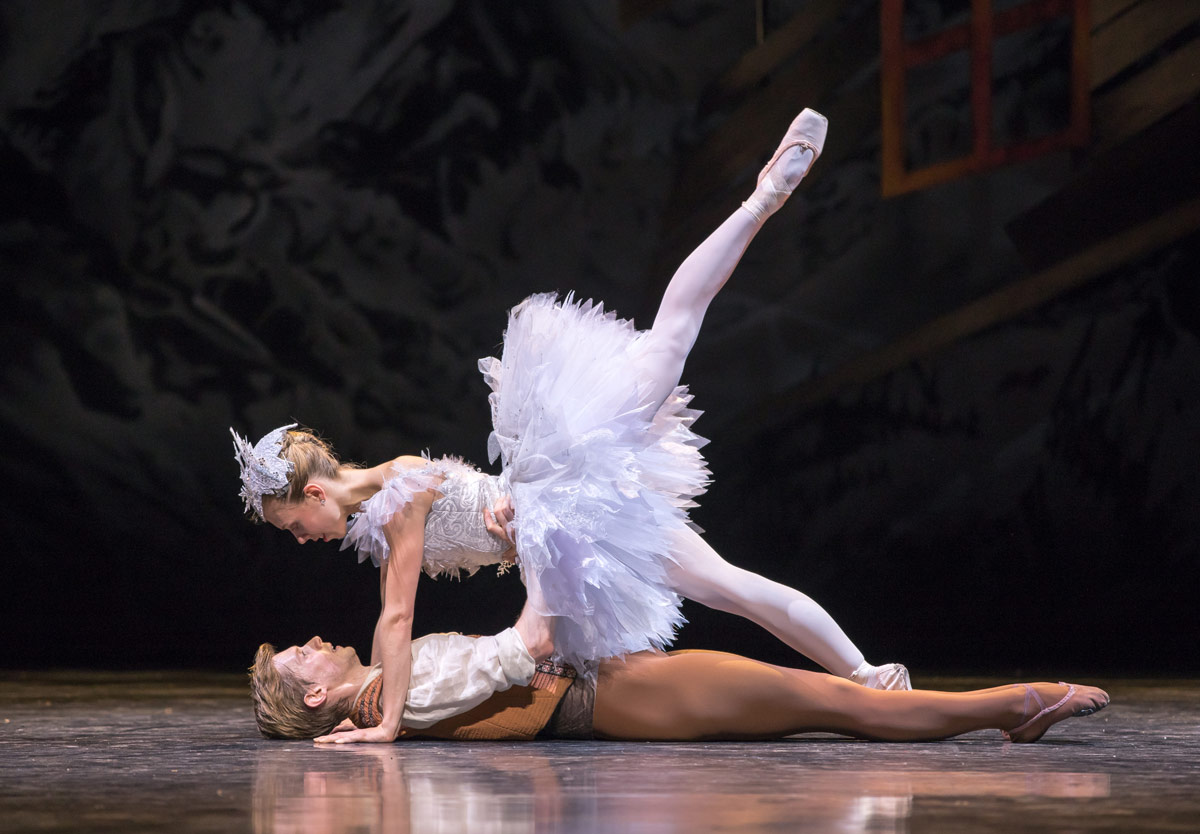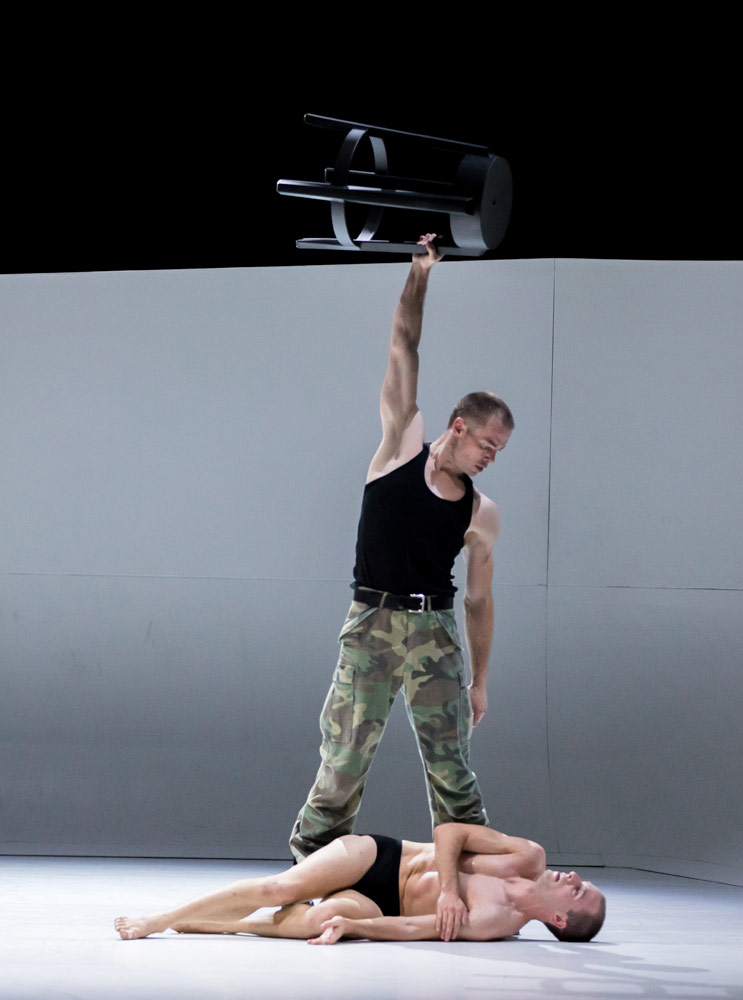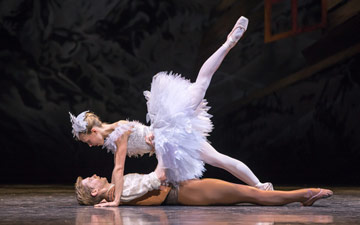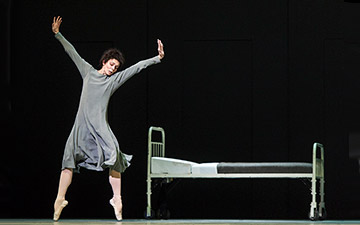
© Andy Ross. (Click image for larger version)
Scottish Ballet
Stay Home with Stravinsky: The Rite of Spring, The Fairy’s Kiss
★★★★✰
Archive recording from 13 October 2017, Festival Theatre, Edinburgh
Relays on 27 May and 10 June 2020 respectively
Available to stream until 30 June 2020
www.scottishballet.co.uk
With one common factor, music by Igor Stravinsky, Scottish Ballet (SB) deliver two excellent and very contrasting performances which were filmed at the Festival Theatre, Edinburgh in 2017.

© Andy Ross. (Click image for larger version)
Sir Kenneth MacMillan’s The Fairy’s Kiss which he created in 1960, was revived by SB in the autumn of 2017 and included performances at the Royal Opera House as part of the 25th anniversary celebrations of his death. Watching it live on stage then, and on screen now, I find that the screen version accentuates just how very taxing the choreography really is. Andrew Peasgood as the Young Man (and the recipient of the kiss), leaps from solo to pas de deux and back again for nearly an hour and does so with a charming demeanour and accomplished technique. It’s not just strenuous and stamina sapping. The steps themselves for Constance Devernay as the Fairy, Bethany Kingsley-Garner as the Fiancée alongside Peasgood and a large corps de ballet, involve negotiating all sorts of speedy changes in body direction, weight and balance that seem quite alien when pitted against some of MacMillan’s later works. All are met with panache and assurance and having a piece such as this in the repertoire is always going to present renewed and fresh challenges.

© Andy Ross. (Click image for larger version)
The Fairy’s Kiss is the story of a mother and baby who lose their way in a storm, she dies and the baby is ‘kissed’ by the Fairy, thus putting a curse on him. He’s destined to be under her spell for eternity, relinquishing the chance of a happy marriage. In short, said Fairy is a selfish creature and lures the Young Man away from his betrothed. Gary Harris’s delightful costumes and sets create an appealing atmosphere, enhanced by Simon Bennison’s lighting. Jean-Claude Picard conducts the Scottish Ballet Orchestra, sensitively observing the challenges presented to those on stage. All this embellishes, however, it’s a ballet that tests the dancers on every front. Devernay is in complete command as the Fairy: crisp, elegant dancing and intimidating presence. Mia Thompson as the Gypsy (the human form of the Fairy) is a confident temptress, with languorous port de bras. Kingsley-Garner has a vivacious and expressive face as well as a wonderfully brisk athleticism to her dancing. One does feel desperately sorry for her as she searches in vain for her lost husband-to-be. However, it’s Peasgood who is the hero of both the story and the performance as he does not let up for one moment, persevering with unrelenting determination.
Video trailer for The Rite of Spring at the Edinburgh Festival.
Christopher Hampson’s take on The Rite of Spring is a starkly reinvented production and tremendously impactful. Of course, the music does a great deal to ensure a high voltage impression but Hampson has moved away from tradition in an interesting and bold way. Rather than depict the chosen maiden/man, sacrificed in a ritualistic manner – his dancers are siblings, an older and a younger brother. This retains the tribal theme but the dynamics are vastly different. The third dancer represents first Faith, then Death.

© Andy Ross. (Click image for larger version)
The Rite designs (by Hampson as well) comprise a room that has no escape, the high, sloping walls used to great effect within the choreography. Christopher Harrison (older brother) and Constant Vigier (younger) are the vehicles for what turns out to be a spine-chilling shift in trust. At the start Harrison appears to lead the way, showing his brother what he must do and Vigier takes his mentoring openly. They seem playful, willing and a collaboration of equality. But Harrison’s power seems to overcome him. The playfulness turns more forceful, brutish. As Sophie Martin enters as Faith and both brothers are equally entranced – there are some extraordinary lifts where she is elevated, running up the walls, thrown between the brothers. Eventually, Harrison takes charge and his younger sibling is subjected to what appears to be enforced imprisonment. Harrison, changed into combat fatigues, has morphed into his brother’s gaoler – Vigier in the meantime has become visibly agitated. Martin, returning as Death – is not the comfort he believes she is. From then on, Harrison explodes ferociously, methodically destroying his brother in a gasp-inducing display of savagery.

© Andy Ross. (Click image for larger version)
Whilst it is unpleasant – this Rite is fiercely compelling. The three dancers are breathtaking; Hampson surely has success written all over this and Picard once again leads the orchestra to electrifying excellence.

















You must be logged in to post a comment.